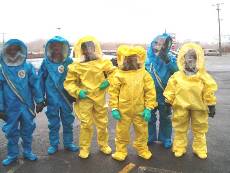
Some of the biggest ever claims made against companies by employees and former employees have been related to respiratory issues caused in the workplace. Things are getting better as we come to understand the impact of our surroundings on our bodies. However, this does not mean that you can afford to be careless. There are three primary areas that you need to consider to ensure the safety of your employees from harmful airborne chemicals and particles. You are after all responsible for their safety and well-being, as well as protection of your own interests.
- Workplace Materials
The things you’re actually working with are most likely to be the sources of hazard in the workplace. This can include everything from spray paint, to wood shavings, to everyday cleaning chemicals. It’s very important that all of your employees are fully trained and understand exactly what they’re working with. As an example, mixing some very common cleaning products can result in the release of very harmful gases – not everyone is aware of this, and in some situations it can be lethal. This is something all workplaces should be aware of.
- Location
Hazards to respiratory health don’t necessarily have to be present in the materials and equipment you’re working with. Asbestos is perhaps the most well-known danger. It is a material previously used in building, generally used as insulation or to guard against fire, and can be extremely dangerous when disturbed. It can potentially be found in virtually any building older than 10-20 years, but the inhalation of the fibres when moved can cause all manner of very serious illnesses, including lung cancer. Thousands of people die each year as a direct result of breathing it in, and it is the employer’s responsibility to make sure that employees are never ever exposed; removal is a specialist job.
- Safety Equipment
Depending on the job, it may be necessary and unavoidable to come into contact with dangerous airborne particles and anything else that could pose a respiratory hazard. When this occurs, taking necessary precautions is essential, and this most often means being equipped with the requisite safety items. This will vary depending on what employees are working with, but usually, this means wearing a dust mask or respirator that is specifically designed for the hazard at hand, and perhaps using air filtration systems. To find out more on how best to deal with hazardous gases on a major industrial estate, visit www.ergapc.co.uk. In these cases, the harmful chemicals and particles are actually removed before they ever have chance to come into contact with people, but the same principles of filtration generally apply everywhere.
Related posts:
5 Common Mistakes Start-ups Make When Moving Office
How Business Owners Can Benefit from E-Learning
Top 3 Areas You Need to Invest in to Grow Your Business
House Painters’ Advice - 5 Questions you must ask when Consulting a House Painting Contractor Before Hiring
How to Light Your Home Office Space with LEDs






